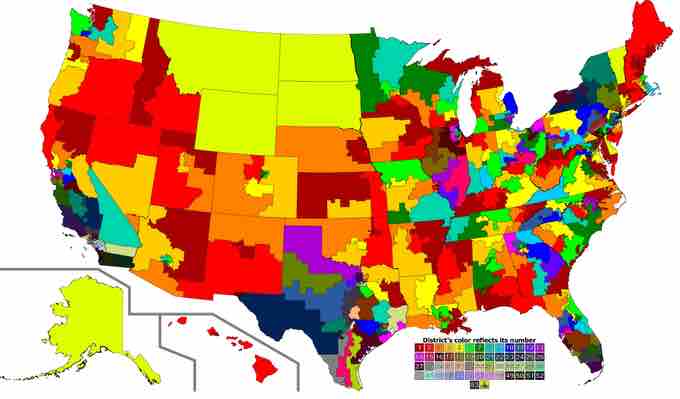Constituency
Each member of the U.S. Congress is elected by voters in their home district. These voters are a part of congress' constituency. Each congressional member has a special responsibility to their constituents because these are the only voters who get to decide if a member will be re-elected.
Models of Representation: The Delegate vs. Trustee Model
Representatives can act in two models of representation: as delegates or trustees. The delegate model of representation is a model of a representative democracy. In this model, constituents elect their representatives as delegates for their constituency. These delegates act only as a mouthpiece for the wishes of their constituency, and have no autonomy from the constituency. This model does not provide representatives the luxury of acting in their own conscience. Essentially, the representative acts as the voice of those who are (literally) not present.
On the other hand, the trustee model of representation is a model for how we should understand the role of representatives, and is frequently contrasted with the delegate model of representation. Constituents elect their representatives as 'trustees' (or 'entrust' them) for their constituency. These 'trustees' have sufficient autonomy to deliberate and act in favor of the greater common good and national interest, even if it means going against the short-term interests of their own constituencies. The model provides a solution to the problem of uninformed constituents who lack the necessary knowledge on issues to take an educated position. By contrast in the delegate model, the representative is expected to act strictly in according to a mandate from the represented.
House of Representatives Districts
Members of the House of Representatives are elected to represent districts that range in size from the 905,316 people representing the entire state of Montana to 495,304 which represents the entire state of Wyoming. Most states have multiple representatives.
Districts are generally reevaluated after each 10 year census. The districts are redrawn as needed to adjust to population changes. However, this is not a completely neutral process. The practice of gerrymandering has been used to insure that one or the other party will have an easier time winning elections by creating districts that hold a majority of voters likely to vote for one party or the other. Looking at the maps of congressional districts it is obvious that some districts are far from uniform. The more complicated shapes on the map might be a result of gerrymandering.

U.S. Congress House Districts
This map shows the boundaries for the U.S. Congress housing districts.
Senate Seats
U.S. Senators simply represent their states. There are two senators per state. Therefore, the constituency in smaller states such as Wyoming might be able to gain disproportionate influence.
Local Concerns
All members of congress maintain constituency offices, which are home bases where staff can keep in touch with local concerns, activists, and interests. Members of Congress will pay a great deal of attention to their constituency's concerns. Congressional members will often attempt to maintain support with constituency members through practices such as pork barrel politics. This practice is when members will use their influence in Congress to gain support for local projects such as new lucrative construction projects.